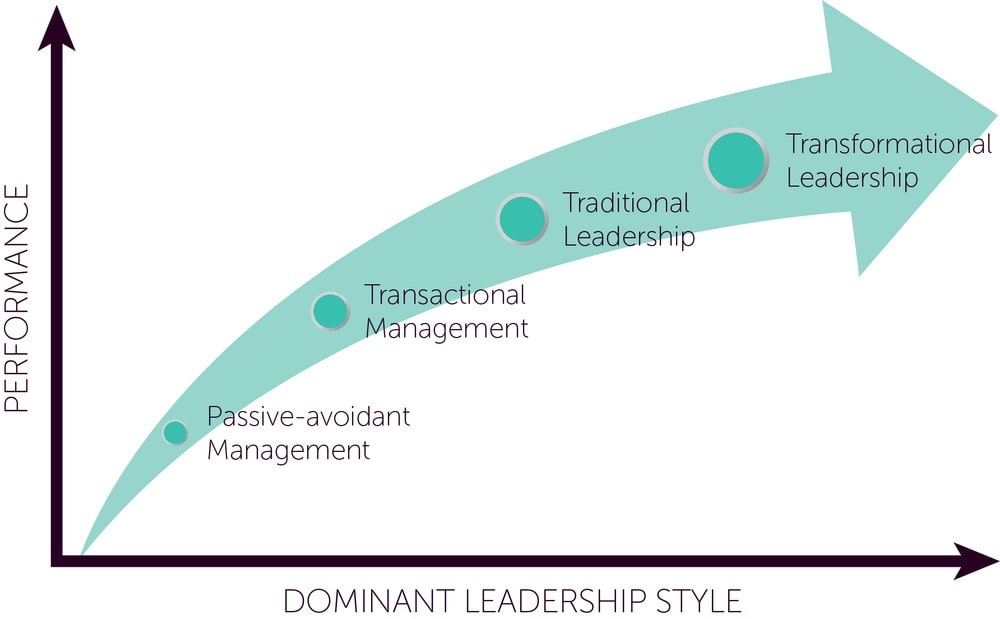What is Transactional Leadership Style?
In our previous article, we learned what is Transformational Leadership. Now, it’s time to discover how we get there, in other words Transactional Leadership. To outline this article about Transactional Leadership Style, let’s quickly review Transformational Leadership Definition and Examples.
Table of Contents
A Good Leader is Not a searcher for consensus, but a Molder of Consensus.
Martin Luther King, Jr.
We strongly suggest you to read again, and if you have not read, our article about Transformational Leadership to have a better understanding of our review.
Transactional vs Transformational Leadership
In the previous article, we learned that Transformational Leadership consisted of 4 unique components. These were,
- Idealized Influence {Work Hard + Be a Role Model + Be Ethical + Inspire + Emphasize a Common Mission}
- Inspirational Motivation {Developing a Promising Vision + Captivating & Inspiring Stories + Emotional Appeals to Work Harder}
- Intellectual Stimulation {Coaching & Mentoring + Encouraging Creativity and “Outside the Box Atmosphere” + Tolerance for Mistakes/Failures + Calculated Risks}
- Individualized Consideration {Coaching + Listening + Offering Resources}
Furthermore, we learned that being a Transformational Leadership is all about being in the present moment, and certainly staying present, however this does not mean the Transformational Leader acts circumstantially. The Transformational Leader prepares their Team, knowing their potential, for the Future.
We skipped an important point while discussing Transformational Leadership, this jump was on purpose. Before we discuss what is Transformational Leadership Style and Transformational Leadership Examples, please look at the graph below carefully.

As you see in the Graph, we have been exploring Dominant Leadership Style. We can consider this graph like the phases of becoming The Best Leader in the workplace. You start from the Bottom, Passive-Avoidant Leader, and work hard to reach the Top, Transformational Leadership.
In the previous article about Transformational Leadership, we emphasized Change as the key point of being a Transformational Leader. It was about seeing the potential that will be beneficial for the Future. Transformational Leadership was about invested, one by one, by listening and mentoring their Team Members, Transformational Leader invested in them to realize their full potential.
As much as we stay Style, we’d like to mention that it is a Style, but it is a phase of a Growing Transformational Leader.
When it comes to the definition of Transactional Leadership however, as the name itself states, it’s all about Transaction. A quick example? The Team Member gets their monthly salary doing the tasks that are given by the director and doing them in the exact way he told them, leaving no space for the Team Member to be creative or add something of their own. The word tells us that this Bill Gates’ go-to strategy.
“Leadership is the Capacity to Translate Vision into Reality.”
Warren Bennis
Transactional Leader may be considered like a strict movie director. After the Team Members, hear the director’s “Action!”, the scene begins. The Team Member has no chance but to obey the directions of the Leader, if they are getting something in exchange, in this case their salary. And that is the transaction, due to their obedience to these directions, they get something beneficial to them in return.
In Summary, Transactional Leaders:
- Have specific goals and they give clear unchangeable directions to Team Members, and the Transaction is agreed to before the Team Members or Employees begin the job. Both sides should agree for a Transactional Situation to occur.
- Give honest and objective feedback on the Employees’ or Team Members’ performance with the solemn goal, to increase their efficiency in order to get the job or task done as soon as possible, meaning that they are short-term-goal-oriented.
- Are conventional, instead of innovating they prefer to keep the established practices and rules which they believe are effective.
- Do not avoid correcting the wrong actions of Team Members and unlike Transformational Leaders, they do not do it empathetically.
- Clearly define the exchanged fines or rewards before assigning the Employees or Team Members on the Task and assuring that, they are positive. Furthermore, rewards the increased performance with additional resources.
Supervision + Performance + Organizational Leadership = Transactional Leadership Style
The Transactional Leader is not a Visionary, once again, unlike the Transformational Leader. We can even relate Transactional Leadership Style to Pavlov’s famous experiment about Classical Conditioning.
For this reason, this leadership style was common after the second world to restructure the broken dynamics internationally. As it is apparent, in the necessity of Transactional Leadership, Employees or the Team Members are not motivated by themselves and therefore need an external resource (i.e., financial) to be supervised and directed towards the tasks they were appointed.
We’d like to quote an infamous saying of the Transactional Leaders:
“If it’s not broken, do not fix it.”
A frequent dynamic of a well-established company, based on the sustainability of the existing traditions and processes.
This Leadership Style may be effective in companies with established structures; however, it can damage a Start-Up’s operations as it’s based on Innovation.
To sum it all up, we can say that Transactional Leadership is all about stability; meanwhile attempting to increase performance by using existing resources within the Organization or Company.
Let’s Review what we’ve discussed on Transactional Leadership
Transactional Leadership is viewed as a phase of the Growing Transformational Leader. If we were to consider a Transformational Leader as an “Adult” as in Developmental Psychology, we might treat Transactional Leader in somewhere in the middle of a toddler and child. This analogy I believe will help you schematize the Transactional Leader in your mind. Furthermore, we discovered that Transactional Leadership Definition consists of 5 main components: Efficiency, Effectiveness, Short-Term and Reward Based Orientation, Conventionality, and Supervision with Defined Objectives/Goals. Until it’s broken, the Transactional Leader is nowhere near fixing it.
And that is all about Transformational vs Transactional Leadership @ Project Cubicle!
What do you think about Transformational vs Transactional Leadership?
What is the difference between leadership and management?
Do you have a request for a specific content you think we should cover in our upcoming articles?
Let us know in the comments below!










